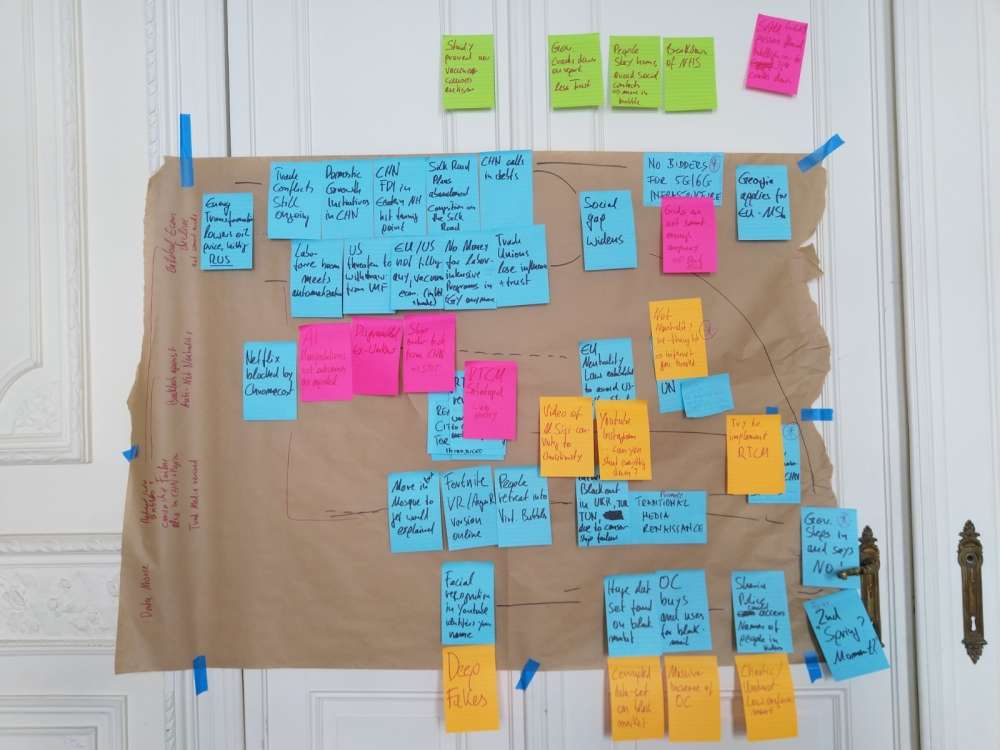Scenarios for Governance Breakdown and Violent Conflict in the EU’s Neighborhood

In a time of constant change, what will the EU’s neighborhood look like in five years? How could future developments in different regions constitute a threat for peace in the European Union? What steps can the EU take to prepare for an uncertain future?
This booklet presents 13 scenarios for governance breakdown and violent conflict in the EU’s neighborhood until 2024, which were created in the context of the EU-LISTCO research project. They are the result of four threat-scanning exercises with expert participants and relate to the following geographical and thematic areas:
- Middle East: The region between the Mediterranean and Afghanistan, plus the Gulf countries;
- The European Union’s Eastern Neighborhood: Including the countries of the EU’s Eastern Partnership and the Russian Federation;
- North Africa: With scenarios for Libya and Tunisia;
- Out-of-control technologies: Risks related to technologies that have become independent of their origin and creators, whether by design or accident.
For each topic, a small group of experts (between 8 and 15) participated in an exercise conducted in part online and in part at a workshop. The group of participants for each exercise consisted of EU-LISTCO researchers with relevant regional or sectoral expertise, additional experts from Europe and the focus regions, and policymakers from cooperating foreign services (including France, Germany, Italy, and the EU). The four workshops took place between June 2018 and May 2019 in Jerusalem, Berlin, Paris, and Brussels.

The chosen time horizon for each exercise was five years into the future (looking from 2018 – 19 to 2023 – 24), in order to anticipate threats for the European Union in a way that is timely with respect to the dynamics of the policy process and the reaction speed of most relevant policy instruments for foreign services. The scenarios are intended to help enhance the EU’s capacity to prevent these threatening developments or to prepare for them – a major concern of the EU-LISTCO project.
As plausible thought experiments about alternative future developments, the scenarios deliberately focus on situations that may be considered surprising or even unlikely but are still possible – and they necessarily diverge from current expectations. Each scenario can help readers learn something new, broaden their horizons and think differently about the scenario topics. This, however, crucially depends on taking into account the context in which the scenarios were developed, as they cannot and were never meant to offer a neutral perspective on future developments.
The scenarios were produced in a structured group process, because only collectively can people break out of their individual mindsets, current expectations and common sense of what the future might hold. The scenarios are the product of a methodologically guided and facilitated process in which a diverse group of experts share and integrate their views, perspectives and knowledge in order to learn from each other and to explore plausible (which is not to say probable) future developments. The methodology that was used to create the scenarios is described in a working paper and an EU-LISTCO report available from the authors.

The project is funded by the European Union’s Horizon 2020 research and innovation program under grant agreement no. 769886.







